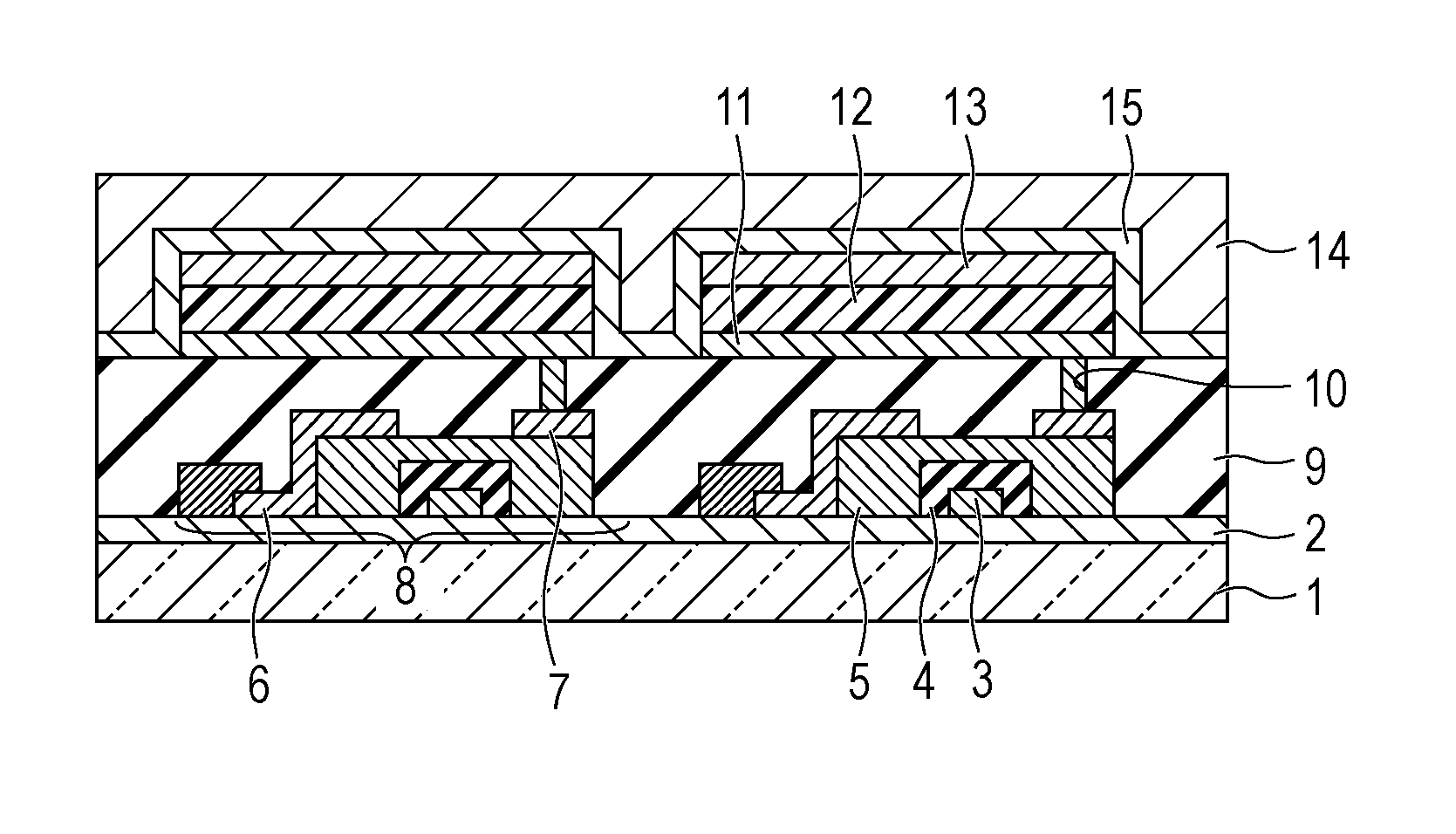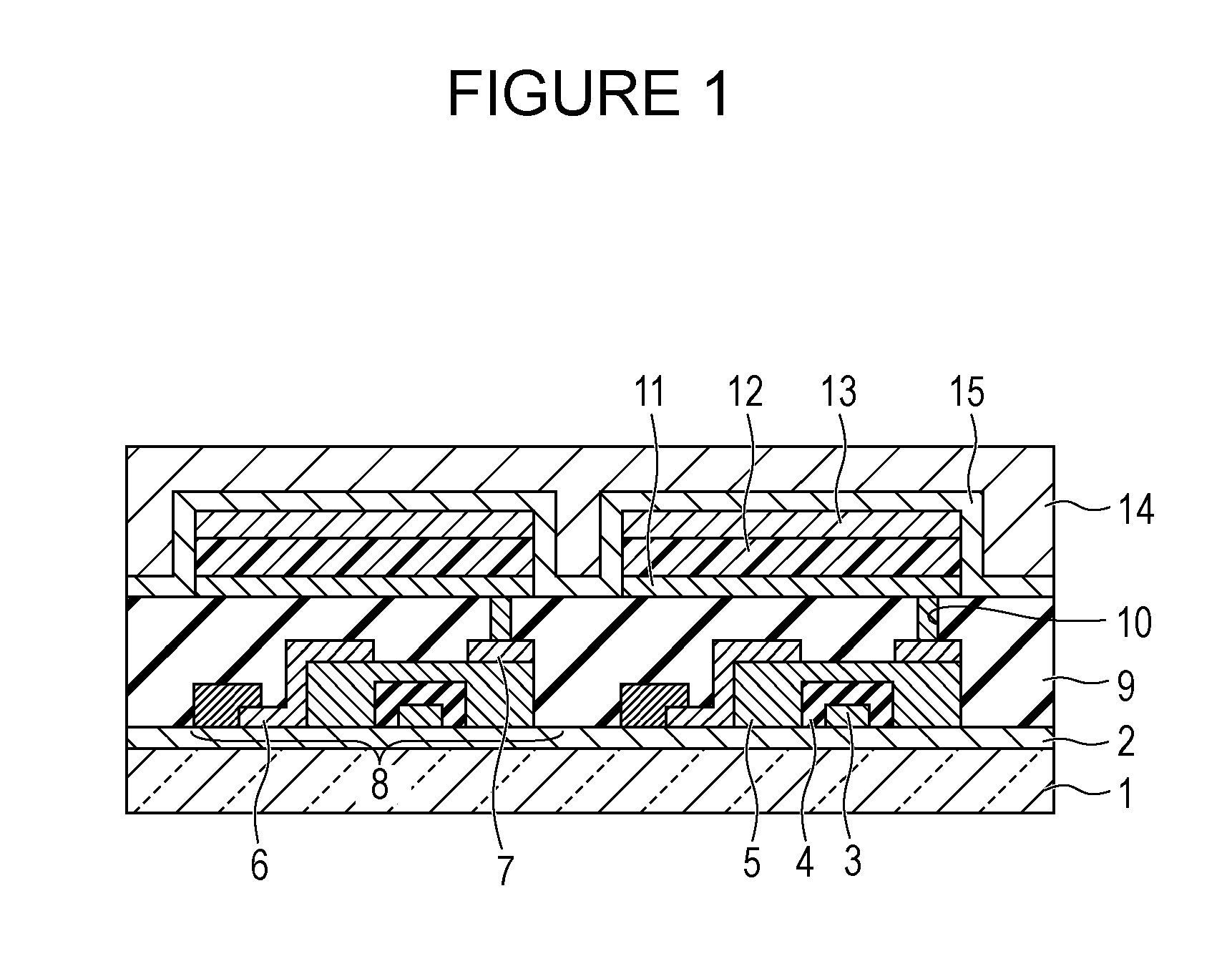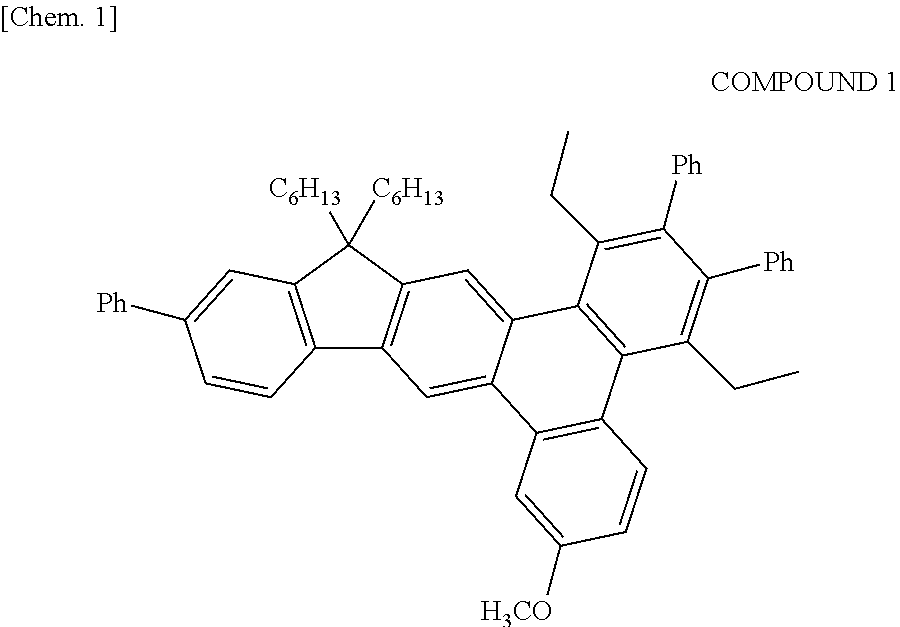Triphenyleno-benzofuran compound and organic light emitting element including the same
a technology of triphenylenobenzofuran and organic light emitting elements, which is applied in the direction of organic chemistry, luminescent compositions, thermoelectric devices, etc., can solve the problems of compound liable to crystallize, and it is not clear whether a phosphorescent element including the above compound is useful or not, so as to achieve high t1 energy, high luminescent efficiency, and high glass transition temperature
- Summary
- Abstract
- Description
- Claims
- Application Information
AI Technical Summary
Benefits of technology
Problems solved by technology
Method used
Image
Examples
example 1
Synthesis of Intermediate 1
[0139]
[0140]The following reagents and solvents were charged in a 200-ml eggplant flask.
2-Bromoiodobenzene (manufactured by Tokyo Kasei Kogyo Co., Ltd.): 5.0 g (18 mmol)
4-Dibenzofuranyl boronic acid (manufactured by Sigma-Aldrich Co.): 3.8 g (18 mmol)
Tetrakis(triphenylphosphine)palladium(0): 1.0 g (0.90 mmol)
Toluene: 50 ml
Ethanol: 10 ml
[0141]2M Sodium carbonate aqueous solution: 23 ml
[0142]This reaction solution was stirred and heated at 80° C. for 6 hours in a nitrogen atmosphere. After the reaction was completed, an organic layer was separated, was dried with magnesium sulfate, and was then filtrated.
[0143]The solvent of the filtrate thus obtained was distilled off under reduced pressure, and a viscous product was refined by a silica gel column (chloroform:heptane=1:3), so that 3.9 g of an intermediates 1 was obtained (yield: 68%).
Synthesis of Intermediate 2
[0144]
[0145]The following reagents and solvent were charged in a 100-ml eggplant flask.
Intermediat...
example 2 to 6
Synthesis of Example Compound A-2, A-3, A-4, A-10, and A-11
[0176]Each example compound was obtained by a method similar to that of Example 1 except that the intermediate 5 used for the synthesis of the example compound-A-5 of Example 1 was changed to a halogenated compound shown in Table 3.
[0177]In addition, each example compound was identified by MALDI-TOF MS.
TABLE 3EXAMPLEHALOGENATEDCOMPOUNDCOMPOUNDMALDI-TOF MS (m+)EXAMPLE 2A-2622.2EXAMPLE 3A-3586.2EXAMPLE 4A-4620.2EXAMPLE 5A-10622.3EXAMPLE 6A-11632.2
example 7
Formation of Organic Light Emitting Element
[0178]In this example, an organic light emitting element in which an anode / hole transport layer / light emitting layer / hole blocking layer / electron transport layer / cathode were provided on a substrate in this order was formed by the following method.
[0179]An ITO film having a thickness of 120 nm was formed as an anode on the glass substrate by a sputtering method and was used as a transparent conductive support substrate (ITO substrate).
[0180]The following organic compound layers and electrode layers were sequentially formed on this ITO substrate by vacuum deposition using resistance heating in a vacuum chamber at a pressure of 10−5 Pa.
[0181]In this case, the opposing electrode was formed to have an area of 3 mm2.
Hole transport layer (40 nm): HTL-1
Light emitting layer (30 nm) host material: A-5, guest
material: Ir-1 (10 percent by weight)
Hole blocking (HB) layer (10 nm): HBL-1
Electron transport layer (30 nm): ETL-1
PUM
 Login to View More
Login to View More Abstract
Description
Claims
Application Information
 Login to View More
Login to View More - R&D
- Intellectual Property
- Life Sciences
- Materials
- Tech Scout
- Unparalleled Data Quality
- Higher Quality Content
- 60% Fewer Hallucinations
Browse by: Latest US Patents, China's latest patents, Technical Efficacy Thesaurus, Application Domain, Technology Topic, Popular Technical Reports.
© 2025 PatSnap. All rights reserved.Legal|Privacy policy|Modern Slavery Act Transparency Statement|Sitemap|About US| Contact US: help@patsnap.com



